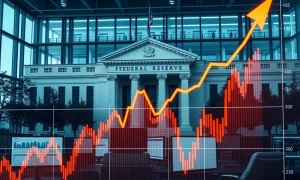Artificial intelligence stocks have captured investor imagination like no other sector in recent history. However, mounting evidence suggests we’re witnessing a classic AI stock bubble formation. Despite clear warning signs, many investors continue pouring capital into overvalued companies. This collective denial mirrors historical market patterns that typically precede significant corrections.
Understanding the AI Stock Bubble Phenomenon
The current AI stock bubble displays familiar characteristics from previous market excesses. First, valuation metrics have become disconnected from fundamental business performance. Second, speculative trading volume has reached unprecedented levels. Third, retail investor participation has surged dramatically. These factors combined create perfect conditions for market overheating.
Psychological Factors Driving Investor Denial
Several psychological mechanisms explain why investors ignore bubble warnings. Confirmation bias leads investors to seek information supporting their bullish outlook. FOMO (fear of missing out) drives irrational investment decisions. Additionally, recency bias makes investors believe current trends will continue indefinitely. These cognitive distortions prevent objective risk assessment.
Historical Parallels to Previous Market Bubbles
Market history provides crucial context for understanding current conditions. The dot-com bubble of the late 1990s shares striking similarities with today’s AI stock bubble. Both periods featured:
• Revolutionary technological narratives
• Extreme valuation multiples
• Widespread retail investor speculation
• Dismissal of traditional valuation metrics
Ultimately, these parallels suggest caution rather than exuberance.
Economic Indicators Signaling Bubble Conditions
Multiple economic indicators currently flash warning signals. Price-to-sales ratios for AI companies exceed historical norms by significant margins. Insider selling activity has increased substantially among AI executives. Short interest levels remain surprisingly low despite stretched valuations. These metrics traditionally indicate overheated market conditions.
Institutional vs Retail Investor Perspectives
Institutional investors approach AI stocks more cautiously than retail participants. Professional money managers increasingly hedge their AI exposures through options strategies. Conversely, retail investors continue adding leverage to their positions. This divergence in behavior highlights the knowledge gap between sophisticated and novice market participants.
Regulatory Warnings and Market Response
Regulatory bodies have begun issuing cautious statements about AI valuations. However, markets largely ignore these warnings amid continuing price appreciation. This pattern matches previous bubble periods where regulatory concerns initially received minimal attention. Eventually, fundamental realities overcome optimistic narratives.
Risk Management Strategies for Current Conditions
Prudent investors implement specific strategies during potential bubble periods. Position sizing becomes critically important for risk management. Diversification across sectors provides essential protection. Regular portfolio rebalancing maintains target allocations. These disciplined approaches help navigate uncertain market environments.
Future Outlook for AI Stock Valuations
The long-term potential of artificial intelligence remains unquestionably significant. However, current valuations appear to discount decades of future growth. Sustainable investment returns require reasonable entry prices. Eventually, market fundamentals reassert themselves regardless of compelling narratives.
Frequently Asked Questions
What defines an AI stock bubble?
An AI stock bubble occurs when artificial intelligence company valuations significantly exceed reasonable fundamental values based on exaggerated growth expectations and speculative trading.
How can investors identify bubble conditions?
Investors can identify potential bubbles through extreme valuation metrics, high retail participation, increased leverage usage, and dismissal of traditional risk assessment methods.
Why do investors ignore bubble warnings?
Investors often ignore warnings due to psychological biases including fear of missing out, confirmation bias, and overconfidence in continued price appreciation.
What historical parallels exist for current conditions?
The dot-com bubble of the late 1990s provides the closest historical parallel, featuring similar technological excitement, valuation extremes, and speculative behavior.
How should investors approach AI stocks currently?
Investors should maintain disciplined position sizing, avoid excessive leverage, diversify across sectors, and focus on companies with sustainable business models.
When might the AI bubble potentially correct?
Bubble corrections typically occur when growth disappointments emerge, financing conditions tighten, or investor sentiment shifts from optimism to risk aversion.
























